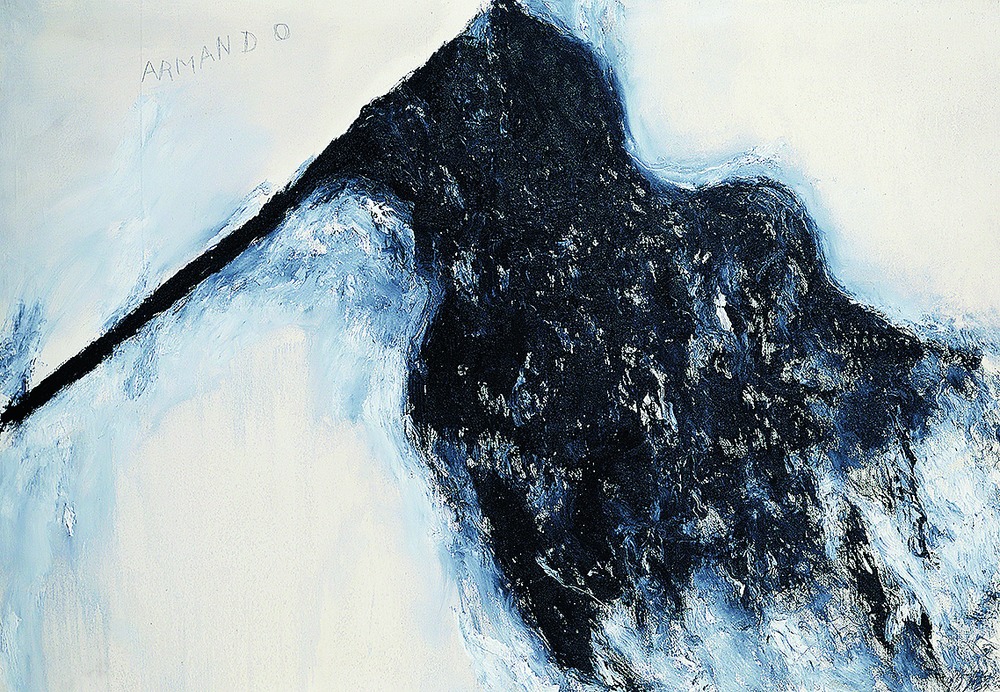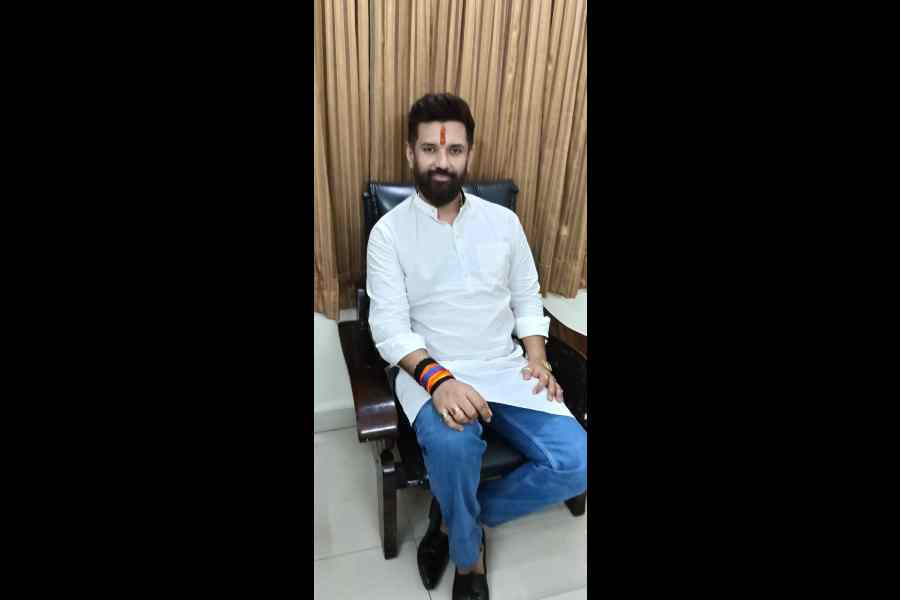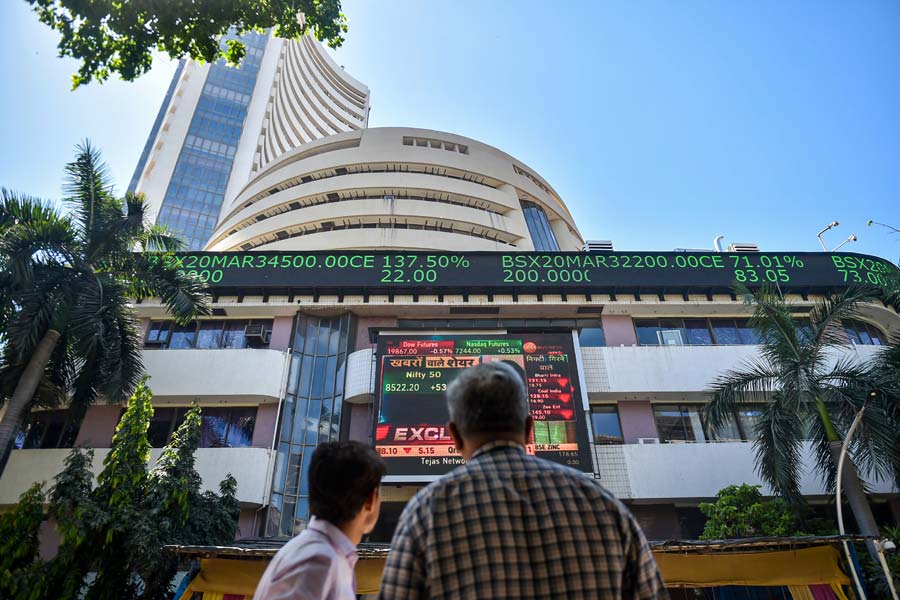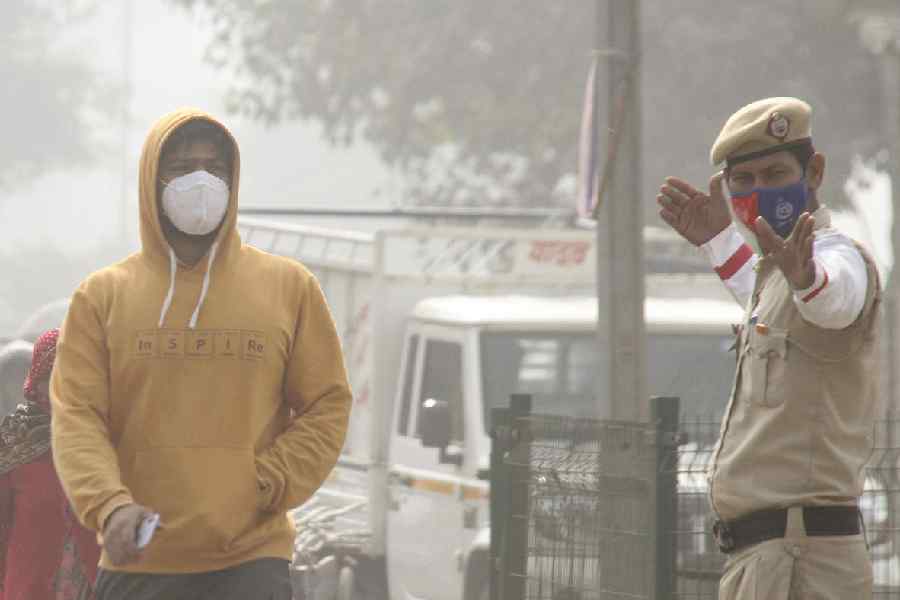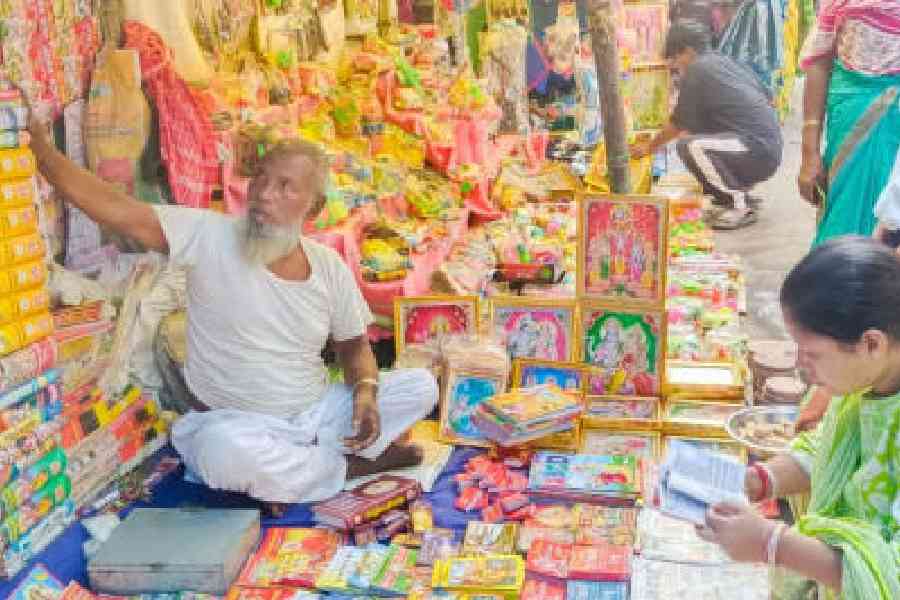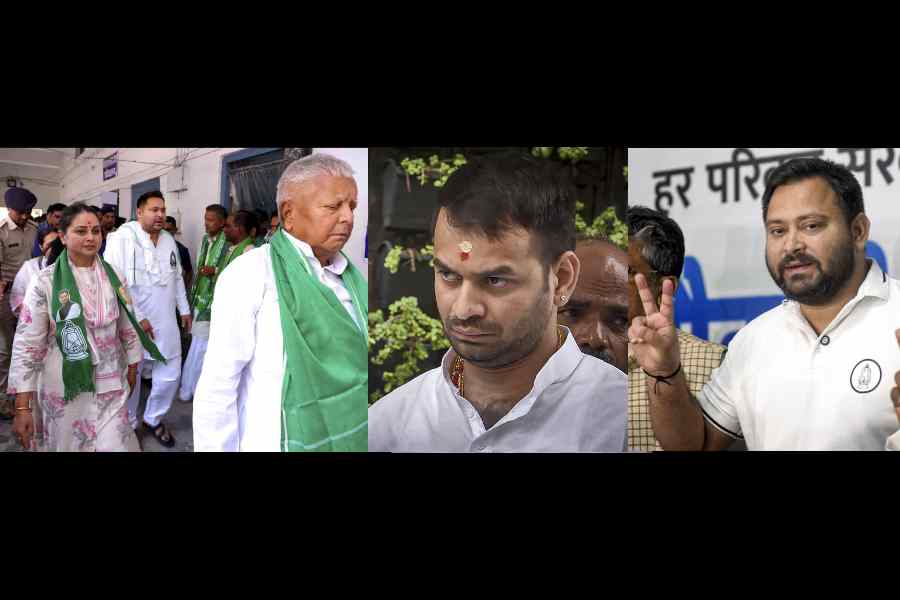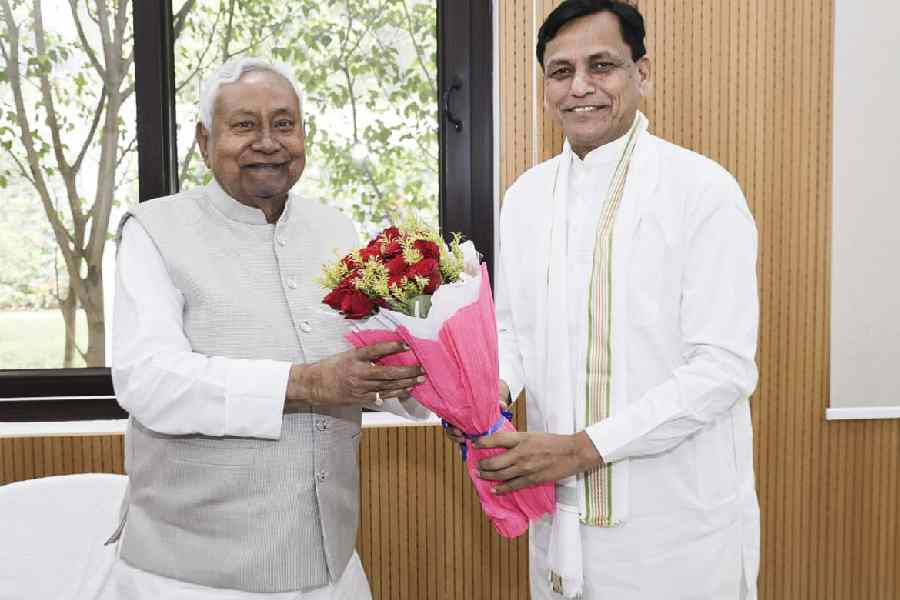
Early 20th-century Paris certainly was the epicentre of the 'art quake' the modern age experienced. Till it shifted to the other side of the Atlantic, along with a great number of European artists, as Nazism metastasized through the 1930s. However, despite the trauma of the War- or maybe because of it - Germany went on to emerge as a major art hub in the 1960s, welcoming talent from different parts of the world - thus confronting and upturning the Nazi aberration - and driving art into uncharted areas.
In IFA's Artspace Germany, a collateral project of Cima Awards, 2017, being presented by Max Mueller Bhavan, Calcutta, at the National Library till March 5 (10.30 am-5.00 pm), curator Ursula Zeller reminds viewers that contemporary German art is as much about migrants as about native artists. And it is the former that this show highlights. Like Armando. The in-between-nations context of globalization and fractured identities make his Flag (picture)- tattered, thickly blackened as though charred by fire in subversive attacks or war, yet flapping defiantly - a potent signifier that serves to mythologize the nation state at a deeply emotional level and preserves entrenched power equations.

Christine Hill's Official Template, designed as an interactive sequence, acquires special meaning in the context of migrants -and even citizens - continuously providing/upgrading data about themselves to state bodies. The corner with camera, table, chair, application forms looks as deceptively cosy as it's cold, intrusive and watchful. Intrusive too, though subtly, persuasively, is the examining lens of Candice Breitz in the confessional video installation, Factum Kang, as it burrows into the intriguing bonds between twins. And Marianne Eigenheer plays mediator in initiating a narrative of communicability through photographs which, as collectible displays in families, breathe private associations.
Across Magdalena Jetelova's black and white photographs of the Atlantic Wall that the Nazis had erected along the coast of Europe run quotations in laser light from, we are told, Paul Virilio's book, Bunker Archaeology. These underline a number of suggestions, military, political, philosophic. The series thus becomes as much a testament of grand human folly as of Nature's appetite for decay and the finality of impermanence.
Ayse Erkmen resorts to the ploy of play: 16 largish trapezoid pieces that fit, like a jigsaw, into a perfect arc. Or don't, if scattered Here and There, as though by an unruly child. Structured order and its wilful or accidental disruption into chaos carry multiple resonances. They go back to Carl Andre, yes, but damaged as the pieces are, they end up questioning sanitized perfection. Fine works come from Per Kirkeby and Giuseppe Spagnulo, though along established routes. But herman de vries's visual haikus trace an umbilical cord back to Nature.
The best-known artist of the show, Joseph Kosuth, follows the text-visual paradigm set by the deadpan taxonomic tone of his 1965 Chairs. But since the language is German the work remains abstruse. Tony Cragg, of Stack fame, isn't seen at his best in his artfully balanced sculpture. Another big name, Nam June Paik, offers a study in contrast: the audio-visual blitzkrieg of one work counterpointing the elegant reticence of the other.
Another collateral show, Popular Prints of Bengal, 1880s-1940s, was presented by the Harrington Street Arts Centre and Ina Puri. In and beyond the deliciously quaint period flavour of the lithos and oleographs there beckons a socio-cultural ambience that's part of Bengal's recent history. Produced at printing houses with art pretensions - Kansaripara Art Studio, Chorbagan Art Studio, Calcutta Art Studio - the garish calendar images bear witness to the uneasy marriage between a tradition of stylized iconography and the modelled figures and natural gestures of British academicism. Some were printed in Germany as well.
The importance of signatures had become established and artists Bamapada Banerjee, Bhabani Laha and Sital Bandopadhyay signed their names at the bottom. Alongside figures from the Hindu pantheon and myths, there were also portraits of nationalist leaders. But the most gripping print was a montage that warned of different kinds of punishment for different sins in a sort of desi Dantian Hell, possibly indicating the influence of Christian theology.
A group of young artists came together for a third collateral show, Shifting Narratives, curated by Manas Acharjee at the defunct Gem Cinema. Madhuja Mukherjee anchored her work on the film, Sholay, turning the skeleton of the balcony into a chilling graveyard. Sumantra Mukherjee's fluorescent tapes in the dark projection room and Taxi Art Collective's video insinuating a cosmic churning enriched the viewer's experience. There also were interesting works by Sukanta Majumdar, Utsab Chatterjee, Paul Holmes, Ankur Das and Debasish Barui.

